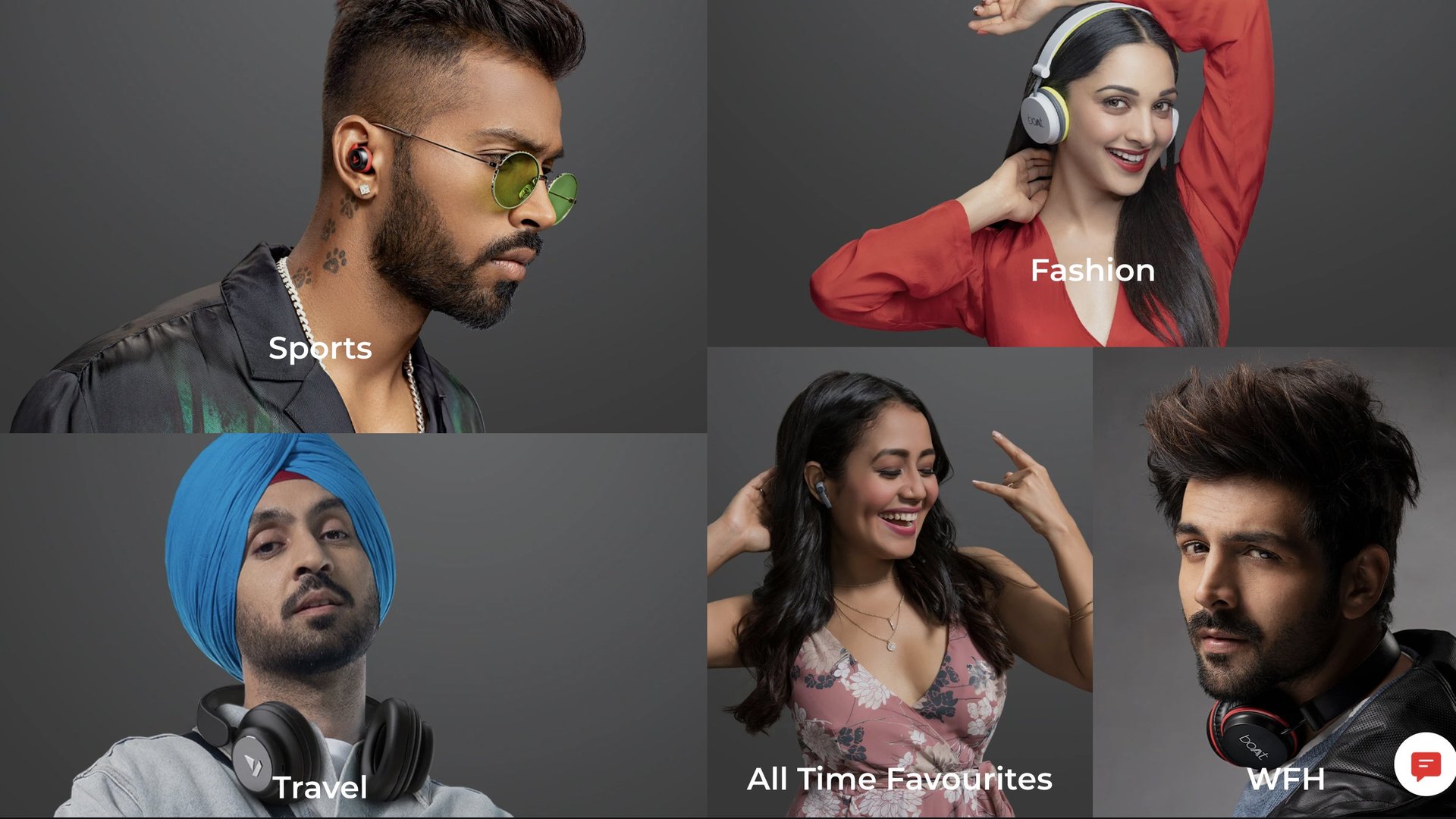How a young Indian brand is beating its Chinese rivals at their own game
A Delhi-based firm has managed to break the Chinese monopoly in India’s personal audio equipment space—by leveraging China’s manufacturing prowess.


A Delhi-based firm has managed to break the Chinese monopoly in India’s personal audio equipment space—by leveraging China’s manufacturing prowess.
boAt, a six-year-old firm that sells headphones, earbuds, and speakers, held a 37% share of the personal audio products segment in India in 2020, according to data from market intelligence firm Kalagato. Chinese brand realme was a very distant second at 8%.
And in the first three months of 2021, three of the top five audio wearable models sold in India were boAt’s, according to Hong Kong-based Counterpoint Research.
Though international brands like Bose Corporation, Sony Corporation, and Bang & Olufsen continue to dominate the premium headphone segment, the affordable category is key in India, given the price-sensitive nature of consumers. In fact, before boAT was launched in 2015, there were very few branded headphone options for Indians in the low-cost segment. In 2019, boAt was selling a speaker every four minutes.
“Before boAt came along, it was difficult to find quality headphones between the price of Rs600 to Rs2000 ($8 to $27),” Kalagato said. “They built a great product in this niche and established a strong brand using an e-commerce led sales model.”
The boAt story
boAt was founded by two Indian entrepreneurs who had prior experience in the audio equipment and electric hardware segments.
Aman Gupta, co-founder and chief marketing officer of boAt, a graduate from the prestigious Indian School of Business, worked at JBL-owner Harmann International as a sales head back in 2013. The other co-founder and chief product officer, Sameer Mehta, owns Redwood Interactive, which distributes computer gaming hardware and peripherals under the Redgear brand.
Besides their technical understanding, the duo has relied on a star-studded marketing strategy to make boAt very popular very quickly.
In 2020, the brand was endorsed on social media by Bollywood actors Kartik Aaryan, Kiara Advani, and Diljit Dosanjh. Beyond Bollywood, the brand also on-boarded several micro-influencers in India’s music, dance, and sporting communities, and tapped into the country’s cricket obsession, becoming the audio partner for six teams in the Indian Premier League (IPL) and hiring cricketer Shreyas Iyer as a brand ambassador.
The company’s marketing has included some out-of-the-box thinking. For instance, in February 2020, boAt launched a new line of headphones and speakers at the Lakmé Fashion Week. Eight months later, the company partnered with fashion designer Masaba Gupta to released speakers with vibrant patterns.
“Lakmé Fashion Week is the Mecca of fashion in India and as a lifestyle brand it became an ideal platform for us to partner and showcase our authority when it comes to stylish consumer electronic products,” boAt co-founder Aman Gupta told BWDisrupt, a platform for young entrepreneurs.
This marketing strategy resulted in big gains for the company. As of November 2020, boAt had two million customers and was selling 14,000-15,000 units daily.
Besides marketing, the company has also managed to attract investments that could help expand its presence further.
At the start of this year, boAT raised $100 million from leading New York-based private equity firm Warburg Pincus—a huge step up from its last $900,000 fundraising round led by Fireside Ventures in 2018.
“Presumably that capital will go into doubling down on brand building, geographic expansion, and extending their product portfolio,” Kalagato noted. The company is expanding into newer product categories, including more affordable audio accessories and even smartwatches.
In February, boAt appointed Vivek Gambhir, a former Godrej Consumer Products executive, as its CEO.
The company is targetting a revenue of Rs1,000 crore ($137 million) by fiscal 2024 (April-March), as compared to Rs500 crore ($69 million) it clocked in fiscal 2019.
There’s much reason for Indians to celebrate boAt’s success, after all, the company is doing what many Indian brands failed to succeed at. But there’s a catch.
boAt made in China
The brand is Indian, but its products, not so much.
boAt’s products are made through contract manufacturing in China, which is a reason why they are so affordable.
Amid a rising anti-China sentiment in India—which hasn’t really translated to any change in consumer behaviour—boAt has said it is looking to move a majority of its manufacturing to India. Especially since the government has chalked out a Production Linked Incentive (PLI) scheme for wearables.
“That will bring in the whole ecosystem, and once the ecosystem is here, then it should get easier for everyone,” Mehta told Moneycontrol in January. “The whole world is looking to reduce risks related to China. So, a company of our size needs to look for diversification.”